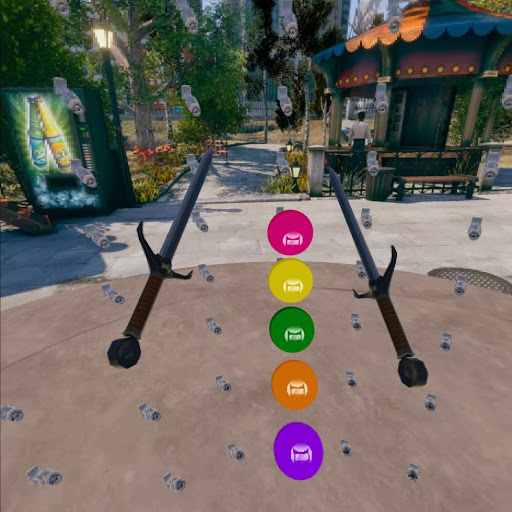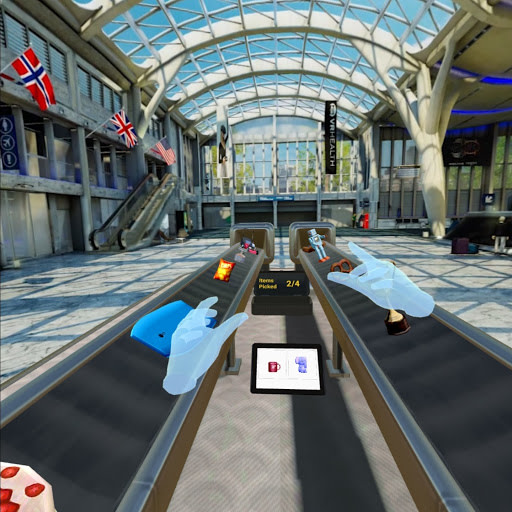
The coronavirus pandemic has forced some radical changes upon people related to how they live their everyday lives.
More people than ever before have been driven online for a good part of their day, with the Internet being integral for work, shopping, leisure, and, thanks to the rise of telehealth, healthcare practitioners are finding new and novel ways of interaction remotely with patients.
Rather than offering healthcare via voice or video chat, XRHeath embraces cutting edge technology to deliver physiotherapy, pain management, stress management and cognitive exercises remotely via a combination of guided virtual reality exercises and VR exercise plans.
Already established in the United States and FDA approved, XRHealth has partnered with BUPA to deliver VR based therapies to Australians.
If you’re interested in trying virtual reality therapy for musculoskeletal back, neck and arm issues, you can book an appointment directly with XRHealth through MyHealth1st
VR and AR - What’s the Difference?
Originally the company that is now known as XRHealth was called VRHealth - a clear indicator of the use of virtual reality when it comes to delivering remote healthcare. The name was changed to XRHealth when elements of augmented reality were also integrated into the business model. So what is the actual difference between VR (Virtual Reality) and AR (Augmented Reality)?
Both technologies typically use a headset that holds a small screen in front of each eye. The proximity of these small screens makes them fill up the field of view, enabling them to place the user in the middle of a virtual world, and motion tracking built into the headset enables users to look around by moving their head naturally. Many AR and VR headsets also come with controllers that are held in each hand, enabling the tracking of hand and arm movements so users can interact with the virtual environment.
The key difference between VR and AR is whether or not the real world plays a part in the experience.
- VR - the entire experience of VR is in a virtual world. This world may look realistic, depict real world places or even use video footage, but everything you see comes from the screens in front of your eyes and not from a real time observation of the world.
- AR - in augmented reality, the real world plays a part. Depending on the technology being used to deliver AR, the exact technique may differ, but a common form of AR involves a headset incorporating a camera that shows the camera view on the eye screens in real time. Virtual objects are then projected over the real world view.
Augmented Reality also frequently plays a part in smartphone and tablet apps, using the built in camera to take real time video of backgrounds while an app augments the image with virtual details. The extremely popular mobile phone game, Pokemon Go is probably the most widely known use of augmented reality.
XRHealth uses a headset capable of both VR and AR functionality that also tracks movement in six degrees of freedom (6DoF) - this means that the headset can detect movement from side to side, up and down, forwards and backwards, pitch (tilting up and down), roll (tilting side to side) and yaw (tilting side to side).
This ability to track the position of the head, combined with two handheld controllers that track hand and arm movement across six degrees of freedom allows XRHealth to use virtual reality to gamify physiotherapeutic assessment and treatment for musculoskeletal issues related to the spine and arms, as well as a number of cognitive, stress and pain related conditions.
Virtual reality physiotherapy - book an appointment directly with XRHealth through MyHealth1st.
What is Gamification?
Repetitive tasks or exercises can be enjoyable for some people, but for many, the thought of having to do so can be extremely off putting. Between traditional face-to-face physiotherapy sessions patients are typically given a number of specific exercises to perform to help strengthen a damaged muscle or joint, rehab an injury or increase range of motion. For some, performing these exercises daily may be easy, but for others the idea of taking time out of the day to perform a series of movements might be a chore at best and easily forgotten at worst.
Gamification is the application of game design to non-game subjects - that’s the dry way of saying that to gamify something is to make an otherwise routine or unenjoyable task fun. This may be achieved through a number of techniques ranging from keeping score on a task and challenging a person to beat their own score for a real or virtual reward to turning a routine task into a literal game, such as is the case with Amazon and a Tetris like parcel stacking gamification of picking and stowing items for delivery .
XR Health uses gamification techniques to make both assessment and exercise in VR enjoyable and easily approachable. Depending on the exercises that need to be performed, people take part in different, easy to follow exercises. Thanks to the gamified approach, in a recent 40 person BUPA trial, XRHealth showed a level of engagement and patient retention not normally seen in home exercise routines.
Book an telehealth appointment with XRHealth through MyHealth1st today - here
Virtual Reality Therapy
The XRHealth app ( Google Play and App Store ) contains a number of exercises designed to aid in strengthening muscles and increasing range of movement, assess and aid cognitive impairment, and manage pain and stress .
These exercises include:
Balloon Blast - active cervical spine range of movement assessment and rehabilitation. This game sees patients bursting balloons with a sweep of a sword. Accuracy and velocity of swings, as well as the speed at which the balloons are burst increases an overall point score, challenging the patient to try and better their own high score each time they play/exercise.

Luna - a cognitive behavioural therapy app designed to aid in the management of hot flashes through an AI therapist and simple guided exercises and breathing.

Memorise - a cognitive and memory training game in which patients memorise objects and pull them from a moving conveyor within a time limit.

React - a reaction time training and assessment app that sees patients monitoring a grid of balls. The balls change colour from white to red or blue. Patients must touch the blue balls and avoid touching the red balls. The speed and accuracy with which the patient reacts to the colour changes rewards them with points.

Relax - guided VR meditation and breathing exercises for both pain and stress relief.

Rotate - a neck range of motion and smoothness of motion assessment and rehabilitation game. Patients use head and neck movements to guide a small dragon around a virtual environment to collect blue orbs.

Book an virtual reality physiotherapy appointment with XRHealth through MyHealth1st - click here
How it Works
- After a patient makes an appointment with XRHealth, and before they gain access to VR based therapy, the patient is first assessed by an XRHealth clinician. During this initial telehealth assessment the clinician will gauge the nature of the complaint or condition, their overall levels of pain and discomfort, their suitability for VR treatment and the like.
- If a patient is suitable for treatment via VR, XRHealth sends the patient a headset and controllers via mail. An initial appointment with a physiotherapist is also made at this time. The headset connects directly to the internet, so all the patient need do before their first session is connect their headset to their WiFi, download any updates and download the XRHealth app on their smartphone. The headset remains the property of the patient until the treatment plan has run its course.
- In the first session with a physiotherapist, the patient’s range of movement and pain is assessed through exercises within the XRHealth app. Thanks to the accurate motion tracking of the handsets and controllers, the physiotherapist is able to access extremely precise and granular data as to the patient’s range of motion. This in-turn enables theckinitian to change the setting on the different exercises so the patient will get the most benefit from performing them.
In this first session the patient is given an exercise routine to perform a number of times before the next scheduled session. These exercises are chosen and calibrated by the physiotherapist to best help the patient.
For example, someone with a strained shoulder limiting the movement of their right arm and causing pain when they turn their neck may be prescribed a routine of Balloon Blast, Rotate and Relax to be performed every day until they see the physiotherapist again.
Although the exercise regime may only include a few of the individual apps within XRHealth, patients have access to all the available
Clinicians can see whether a patient has logged into the app and performed their exercises, and can also monitor in real time the impact of the exercises, such as whether the patient is increasing their range of movement and experiencing less discomfort. So far XRHealth has seen excellent results from guided VR therapies, with around 77% of patients seeing results within 2 weeks of starting. - Once the treatment plan has been completed, all the patient needs to do is re-box the headset and controllers and send them back to XRHealth. There the unit will be COVID-19 sanitised, updated and readied to be sent to the next patient.